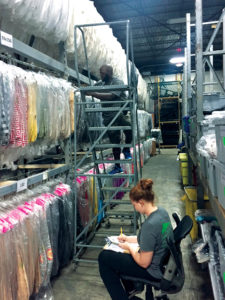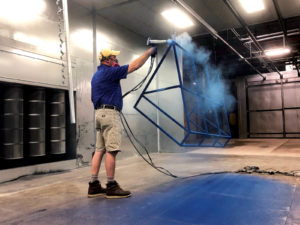
They’re called “growing pains” for a reason. You’ve put in the blood, sweat and tears (and a few bucks) necessary to make your business a success. You’ve made your customers happy, and they’ve told their friends. There’s never been enough time in the day, but now … it’s getting tough to manage it all.
It’s time to ask some hard questions: Do you want to grow? Do you want to take this dream to another level? How do you get bigger without messing up what you’ve worked so hard to build?
Ask the right questions
Half the battle is knowing which questions to ask, says Rick Ludolph, founder and president of Productive Solutions LLC, a consulting firm in Marietta, Ga. For new clients, his questions include: “Do you have a strategy? What is it? What are some of your main challenges, and what are you doing about them?
“Step one for any business owner in this situation is to understand the pluses and the minuses,” Ludolph says, “and work to prioritize what’s important.
“Companies who are still here today are more strategy-oriented than those that have fallen by the wayside,” he explains. “You can’t maintain a successful business just running from one fire to the next.”
Be selective, be strategic
In many cases, Ludolph says, the biggest question might be, “What can be done right now that gives the business the biggest bang for the buck?”
According to Steven Malone, founder and principal consultant at IronClad CFO, a business consulting firm in Salt Lake City, Utah, answering that question can help a business owner understand whether having too much work means the operation needs to grow—or whether it needs to become more selective about the work it’s doing. Companies that took on any kind of work possible during the recessionary period of 2008 and after, simply to survive, may need to rethink their business mix.
“Where is the profit margin?” Malone asks. “You have to analyze what you’re doing. Are there some jobs that require a lot of travel and lodging costs? Are they profitable? You need to understand the reality of the numbers.”
Feed the core elements
Part of considering a growth strategy involves making sure the core elements of the business are in a good place, Malone explains.
“Some entrepreneurs can’t stop looking forward,” he says. “They spend so much time trying to figure out what the next thing is that they never fully develop the first thing.”
If that core business is run correctly, it can fund other opportunities, Malone says. “But remember what feeds your family and your employees’ families,” he cautions. “One of the worst decisions anyone can make is taking all the resources you have and dumping it into something new. It can kill off what you’ve had.”
With any expansion, Malone says, it’s critical to set up a system that separates different lines of business. “Sometimes creating a completely different entity is the way to go, but you need separate line items,” he explains. “You need to be able to see what’s happening, what is profitable and what might be costing you money. If everything is grouped together, you can’t do that.”
Trust your staff
Taking time to analyze the business and adopting a strategic viewpoint can be challenging when you’re busy pumping out the work. “It’s not how most entrepreneurs are used to working,” Ludolph says. “But it needs to be done.”
But how? According to Malone, any business owner contemplating growth needs to realize that he or she just can’t make every important decision; that’s what limits expansion.
“Putting trust in other people can be hard for an owner,” Malone says. “But if they want to start to do more strategic planning and begin to look forward, they need people they can trust to handle more of the day-to-day business. A good staff can certainly relieve a lot of the pressure.”
Dan Hooks, president and CEO of Party Reflections Inc., a special event equipment rental firm in Charlotte, N.C., seconds that viewpoint. “As you think about growing, the company’s leadership team needs to also grow to meet new challenges that a larger company must face,” he says. “Wearing three hats may not work anymore. As a leader, you cannot do all the things you once did, and had to do, when the company was smaller. If you want to grow, you must trust others to handle the things you used to do.”
Choose the right path

Knowing your market is a key consideration in deciding the best method for growth, according to Hooks. “You need to determine if the market is growing organically so that adding new products and employees can sustain the growth,” he says, “or if it is stagnant or not growing fast enough so that an acquisition is a better approach.”
Hooks says his company first made an acquisition in 1998, when a nearby company had reached its limit of growth and decided its best course of action was to sell the business.
“We felt we had the capacity to grow and just needed market share,” Hooks says. “But we didn’t analyze the revenue volume very well, and didn’t see that the majority of the work fell during the months when we were already busy. We didn’t recognize the significance of what that would do to our workforce, our trucks and our ability to produce the events with the same quality and service our customers had grown to expect.”
“Failure was not an option,” he says, “but we suffered many losses in our customer base and it took several years to gain some of that business back.”
What did they learn? “Staff for the business before the growth hits. If you wait for the growth, it will be too late to find the people and train them in time to be effective,” he says.
For William Morse, president of Ohio Awning and Manufacturing Co. in Cleveland, Ohio, the firm’s acquisition of Canvas Exchange Inc. at the beginning of this year allowed the business to expand, but without the need to find new employees—a tough thing in today’s market—to do the additional work.
“Acquiring Canvas Exchange was essentially making key hires, so to speak, because we brought the staff over,” Morse says. “It gave us trusted people who know what they’re doing.”
Roadblocks may be opportunities
Opportunities for Ohio Awning to grow have also presented themselves in the form of roadblocks, Morse says. He says the company spends time looking at what is stopping it from doing better and how those problems can be fixed.
“For example, we had a bottleneck in outsourcing the powder coating for our metal canopies,” Morse says. “We were at the mercy of our vendors, prices were high, turnaround time was slow and quality was mediocre.”
So Ohio Awning set up its own powder-coating operation, which Morse says has improved both the speed at which projects can be completed and the product’s quality.
“Also,” he says, “while we set this up for our own purposes, we’re doing it for others as well, and it’s a revenue stream that is growing our business. Before we even started, we were getting people asking us when it would be ready—they had jobs for us. That reassured us that we had made the right choice.”
Technology is key
No discussion of growth strategies could be complete without mentioning technology.
“Businesses are successful because they do a lot of things right,” says Ludolph, “but more and more these days one of those things needs to be velocity—the speed of business has changed, and that’s where technology comes in.”
Just keeping up with the competition—let alone growth—requires more attention to technology, Ludolph adds, whether it is increased automation on the shop floor or software that allows for keeping better track of inventory.
“The good news is that technology doesn’t have to be the investment it used to be,” he says. “What used to be only for the big guys is today much more accessible and affordable.”
Critical, according to Ludolph, is the role technology can play not just in incremental improvement, but in “transforming” the business. An example, he says, is using software to help customers keep track of the status of their orders: “You become much more interesting to customers when you can provide that level of transparency.”
Growth requires imagination
Growth strategies seem on the surface to be something that are usually considered when the business environment is good. But even when the economics are challenging, there are opportunities, according to Hooks.
“The recession of 2008 took almost all of our growth away,” he says. “Growth strategy changed to survival strategy. However, if you maintain an active imagination toward opportunities, you can find a way to thrive in the midst of survival.”
In his company’s case, Hooks says, a competitor in the region went out of business. “We didn’t think the market they were in represented a large growth opportunity, but we felt it was a great time to get some inventory that would be needed when the recession passed and business returned to normal.
“Regardless of the plan in place,” Hooks concludes, “part of growth is looking at opportunities when they come up, even if they don’t coincide with your plan.”
Jeff Moravec is a freelance writer from Minneapolis, Minn.
 TEXTILES.ORG
TEXTILES.ORG


